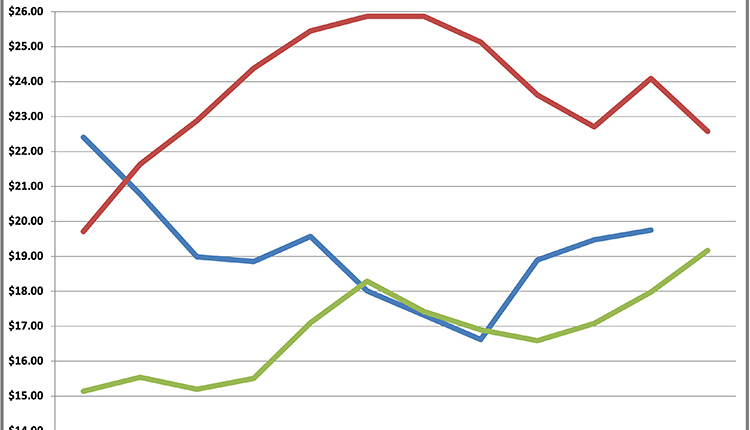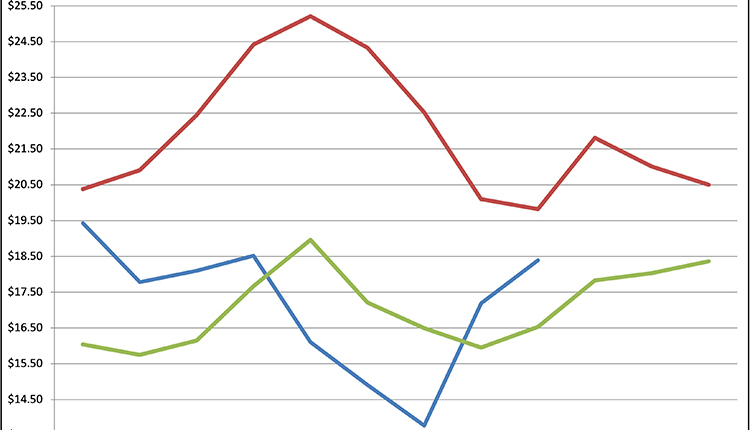
Fundamental changes in management techniques, and subsequently dairy farm sizes, have been evolving for decades. However, they have never been more pronounced than they are today as farm attrition escalates.
More so than ever, most of the milk produced in our country is coming from larger and larger farms. While the number of smaller farms is shrinking, they still are a vital part of rural economies and the diversity needed for food security. We need all sizes and types of dairy farms to meet the diverse needs of U.S. consumers, dairy product plants, and international customers.

Senior VP for Agri-Mark
Must serve all
Economic and political strategies are required that will allow small to medium dairy farms to be viable. At the same time, they must also facilitate prosperity and both the national and international competitiveness of larger operations. In many ways, we need to look at these matters as a dichotomy . . . two diverse sectors of the same industry.
Smaller farms often tend to have multiple enterprises, including on-farm income earning opportunities from farm stands and crop sales and/or income from nonfarm jobs that also provides health insurance. However, even with that influx of income, their milk production costs tend to be far higher than that of larger dairy farms both domestically and internationally. That being the case, they often do not have the financial reserves to survive periods of extended low market prices. It is a particularly sad situation when farm families must work off the farm to cover on-farm losses.
Recent U.S. farm bills have included provisions to provide financial safety nets for small to medium farms. Unfortunately, until last year, the safety net seemed to be untethered on a concrete floor providing little, if any, value.
To be fair, the 2014 Farm Bill showed promise but ended up being an ineffective policy as feed prices found in the payment formulas were not those originally promised. They failed to represent actual feed costs paid by dairy farmers and premium costs were still too high. It took until changes enacted in early 2018 that the dairy program, known as the Margin Protection Program for Dairy (MPP-Dairy), provided some meaningful protection.
Provisions of the latest farm bill show the most promise to support small to medium farms. The provisions of the MPP-Dairy have been modified and rebranded as the Dairy Margin Coverage (DMC) program. This program raises the maximum protection margin from $8 per hundredweight (cwt.) to $9.50, compensating for the inadequate feed costs in the original 2014 margin calculation.
When we first discovered the feed price distortions in 2015, we also asked USDA to refund the premium payments to dairy farmers who had been misled. USDA refused to do this initially, but the 2018 Farm Bill now contains provisions to refund those premiums as either a cash payment of 50 percent of the net loses to participating farmers or a 75 percent credit to current and future premiums. Premium costs to farmers for Tier 1 coverage have also been reduced under the new DMC program with a 15-cent per cwt. fee to purchase a $9.50 margin protection.
Current forecasts anticipate that those premium costs for all of 2019 will be more than covered by the USDA margin payments for January and February alone. Those forecasts also expect USDA margin payment to farmers through the summer and perhaps even into the autumn.
Lower margin protection levels are available at even lower costs, but they would likely not return as much to dairy farmers this year as the $9.50 margin coverage. These provisions are particularly focused on small to medium farms, as only 5 million pounds annually of a farm base can be covered under these lower Tier 1 premium costs. Premium costs above Tier 1 levels are much higher.
In order to further encourage farms to participate in Tier 1 coverage, the farm bill allows for a 25 percent reduction in premium costs if a farmer signs up for the entire five-year coverage period. This would reduce the 15 cents per cwt. cost for $9.50 per cwt. coverage to 11.25 cents per cwt. While looking out ahead five years is difficult, experience shows lower prices occur at least several times in any five-year interval, so extending coverage may be a good strategy.
For larger farms
The farm bill also treats larger farms better than previous versions but still provides less opportunity for direct payments. All dairy farms can capture the benefits of low-price premiums for up to 5 million pounds without having to buy expensive coverage for other milk volumes. They are allowed to split their premium rates, which was previously not allowed.
They also can use both the DMC and the Livestock Gross Margin (LGM) program at the same time and apparently on the same milk volumes. The LGM program is a milk price/feed cost margin hedging program that can allow dairy farmers to fix margins. One drawback, however, is that if the future market is anticipating low margins, the LGM cannot set higher margins than the marketplace.
The farm bill cannot use direct cash payment for larger farms in the same manner that it does for smaller operations. To provide the same payments to farms milking thousands of cows each would literally cost the government billions of dollars when market prices fall. The hedging opportunities provide some benefit to those larger farms, but there is additional policy action that must be considered to keep these large farms financially strong and competitive with their overseas counterparts.
Need a labor influx
Many dairy farms use immigrant labor to some degree as willing domestic workers are often not available. This is particularly the case for larger farms with their higher labor force requirements. We need a national immigration policy that allows these hard-working people and their farm employers to feel secure in their employment.
While environmental regulations are important, too often they are being created by people who have no understanding of the dairy farming and the costs to implement these regulations. Our farms cannot compete with their overseas counterparts if they must incur high regulatory costs not incurred by others. There must be input from the farm community on all such regulations.
Still too low
While the dairy farm dichotomy exists and may be growing, one common issue does remain. Farm milk prices in the marketplace have remained far too low for far too long. Government safety nets and farm assistance programs have their place when marketplace prices are below costs for short periods of time, but they should not be the norm. Dairy profitability is needed at all levels of the industry, including dairy farms!







